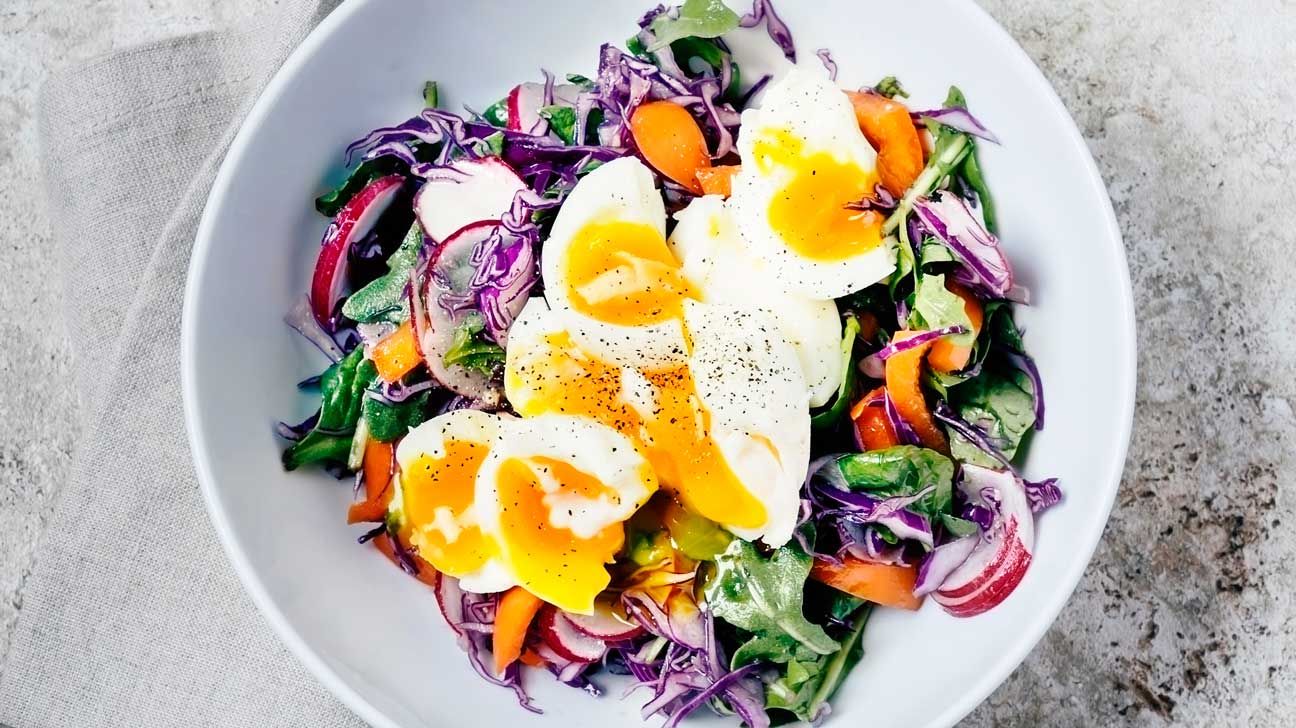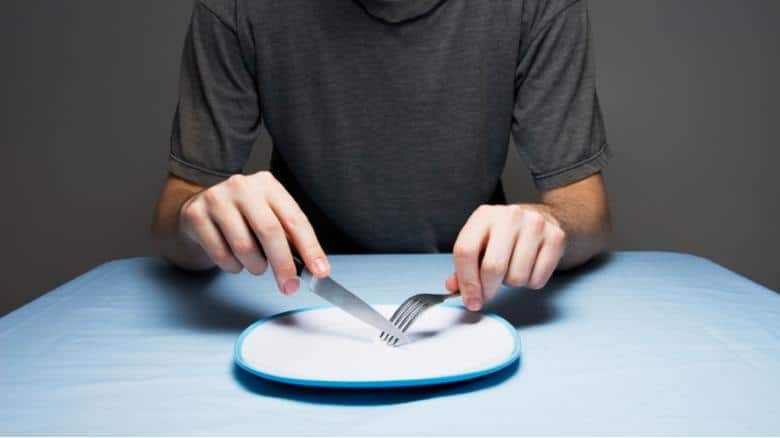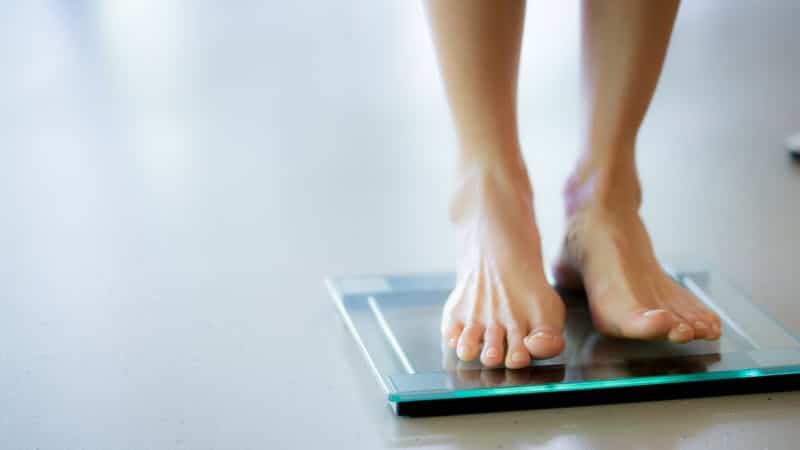By now, you’ve heard of the insane phenomenon known as “intermittent fasting.”
From gimmick to trend to researched to mainstay, intermittent fasting is quite possibly the best health hack you can give your body.
Along with keeping your lean body mass intact and lowering your levels of body fat, intermittent fasting is wonderful for your overall well being.
Whether you’ve given one of the protocols a try or you’ve just scratched the surface, you’ve stumbled upon the ultimate overview of intermittent fasting (or IF for abbreviation).
In this massive guide, we’ll go over what intermittent fasting is, how it works, the various ways you can implement IF, the pros and cons of fasting, and duration advice.
Also, we give you a full food list to optimize IF, how it works with keto diets, how to safely begin fasting, and how to fast based on your body composition goals.
This is a monster article, so let’s get to it!
What is Intermittent Fasting?
Great question. The intermittent fasting dictionary definition is an umbrella term used to describe a diet that cycles between periods of fasting (not eating) and periods of non-fasting (eating).
The most common form of intermittent fasting is simply skipping breakfast. Mainly, the point is to shorten your “eating window” to 8 hours or less.
Seeing as none of this has anything to do with the types of foods you eat, it’s not a “diet” but more of a “dieting pattern.”
This way of consuming our calories has been used for longer than you’d probably think.
Fasting is a tradition within certain religions, and while they didn’t necessarily do it for health properties, our hunter-gatherer ancestors naturally ate when they had food, which wasn’t 24/7.
With our 24/7 culture – we literally have snack stations that boast the always-open benefit of our food abundance – Americans eat for roughly 15 hours of the day.
Assuming 8 hours of sleep per night (because everybody gets that, right?), we’re practically eating for the entirety of the day.
Add in the fact that most of our “meals” are on the go, and you’ve got the typical Western diet of 3-4 meals a day and endless snacks.
How we eat based off work schedules, society, and digital connection is leading us to jacked insulin levels, as well as risk of Type 2 diabetes and heart disease.
Our bodies are made to function without eating all the damn time. It’s more natural as a human being to eat from 12 PM to 7 PM than it is to eat every three hours.
How Does Intermittent Fasting Work?

Scientifically speaking, intermittent fasting has incredible effects on our bodies.
When you fast intermittently, you transfer from the fed state to the fasting state.
What this means is your body uses all of its glycogen stores they received from the excess calories in your food.
Your body always uses the easiest form of energy available; therefore, it takes from recent food, then excess glycogen when you burn all of your current food stores.
Finally, once you deplete your glycogen stores, there’s only one thing your body can burn (except for muscle): Stored body fat.
The fed state lasts from when you start eating until 3-5 hours after.
This is the time when your body is digesting and absorbing food.
Insulin levels are high, which means you’re telling your system to stop burning stored body fat and instead use the glucose in food.
After this period, it takes another 8-12 hours of post-absorption to enter what’s known as the fasted state.
Your insulin levels come back down, glycogen is used up, and roughly 12 hours after your last food you switch to burning body fat that was inaccessible before.
Read More: Alternate Day Fasting – What Makes It Different, And How To Effectively Follow It
Luckily, sleep and skipping breakfast early in the day should get you to this 12 hour time limit.
After that, any additional hour is an hour of primarily burning fat.
The longer you remain in this fasted state, the more body fat you will burn (because your body doesn’t stop burning fuel for energy).
However, this will only work so long as you’re in the fasted state. That means your insulin cannot go up (a.k.a. don’t eat food while fasting).
As soon as you eat any calories, your insulin will spike and shut down any fat burning processes, in lieu of using the easily attainable food energy.
Intermittent Fasting Protocols
There are multiple forms of IF that have gained popularity over the recent years. Here’s an overview of them:
One Meal a Day (OMAD, 24-hour Fast)

OMAD is one of the more “extreme” fasting protocols.
Essentially, you fast all day, only eating once (one meal; it can last up to an hour, but it should only be one sitting).
While not always a strict 24 hours of fasting, the point is to raise your insulin levels once in the day.
While this is a tough diet to master, once you get to an OMAD lifestyle you will experience high levels of energy, as well as up to 12 hours of being in the fasted state, which means double-digit hours of fat loss each and every day.
Thankfully, you can still “consume” zero-calorie drinks, such as water, black coffee, tea, and certain energy drinks or Stevia-flavored beverages. (This is so you don’t go crazy.)
Warrior Diet (20-hour Fast)

Another famous fasting diet, the Warrior Diet is Ori Hofmekler’s protocol where you don’t eat for 20 hours in the day.
This gives you about 8 hours of fat-burning fasted state.
Widely considered a great compromise between LeanGains and OMAD, the Warrior Diet has shown a slew of benefits for many of the individuals who try it out.
As with OMAD, you get consume zero-calorie beverages, but abstain from eating except for a four-hour eating window (the afternoon/early evening area seems to be a good starting point for this protocol).
The 5:2 Diet (Fast Twice a Week)

By far the most different of the protocols, the 5:2 approach has you fasting for 24 hours two days out of the week on nonconsecutive days.
For example, if you were to be on this diet, you could fast from Monday night through Tuesday afternoon (24 hours) and do it again between Friday night through Saturday afternoon (another 24 hours).
You can do it like it’s mapped out above – where it’s simply a 24-hour fasting window – or you can do complete days of no food, such as Tuesday and Friday.
However, the latter approach is rather difficult to do if you’re just starting out.
You can begin with doing simply 24-hour fasts spread out across two days, then work up to completely fasting in a given day.
This strategy is nice for some people, seeing as they have busy weekdays anyways or they can’t hold out on breakfast daily.
Fasting is simply a tool for lowering your caloric intake, so decreasing how much you eat in the week by a full two days’ worth is going to have a positive effect on your overall deficit.
And when it comes to calories in vs. calories out, weekly deficit is more important than a daily deficit.
LeanGains (16-hour Fast)

Last up on the popular fasting protocols is the number one fasting regimen the majority of people begin and stick with.
In this diet, you fast for 16 hours of your day and have an 8-hour feeding window.
The shortest fast of all of these protocols, LeanGains can be as simple as skipping breakfast and eating from noon to 8 PM, or the equivalent.
LeanGains is known to have birthed the IF movement, and with good reason: It’s the easiest to adhere to. (And as we all know, a diet is only as good as your ability to adhere to it for the long haul.)
You don’t push your fast for too long, and you can still eat at around maintenance or a slight caloric deficit.
If you’re new to intermittent fasting as both a protocol and as a movement, we implore you to research LeanGains and see if IF could work wonders for your physique goals.
Intermittent Fasting Benefits

This is where things get interesting.
While fasting does technically burn fat, if you still eat at maintenance or in a caloric surplus, you won’t be able to deplete your glycogen stores enough to start burning adequate amounts of body fat.
Nevertheless, intermittent fasting is an amazing tool with various advantages:
- Weight loss: Probably the reason why you’re here, intermittent fasting helps you limit caloric intake almost unconsciously. With a shorter eating window, you won’t eat as often; if you simply maintain meal portion size and cut out breakfast, you’re limiting calories. Plus, when fasted, your insulin goes down and the fat you have in your body is metabolized.
- Additional HGH: Going without food for a prolonged period of time suppresses the amount of glucose in your system. This lets human growth hormone, or HGH, rise naturally. During fasting, there’s a spike in HGH in the morning and consistent levels throughout the day. Human growth hormone is pivotal to build and maintain muscle mass, burn adipose fat tissue, maximize workout performance, and boost bone density.
- Reduced inflammation: When you eat less often, it allows your body to deplete the glycogen in your body. Removing all of the sugars in your body lets your systems clear out what sugar does, which is inflame almost everything in you. Inflammation is the reason for many chronic issues and internal organ problems. IF helps increase natural anti-inflammatory properties within your body.
- Decreased insulin resistance: Never giving your body a break from food keeps insulin high, which eventually reduces its ability to bring sugar into the cells. This is insulin resistance and is the cause of Type 2 diabetes and other insulin-related problems. With fasting, you don’t spike insulin, which reverses the resistance and makes your body sensitive to it again. This helps your body’s insulin run more efficiently and will keep your pancreas from making it all the time. Also, insulin literally blocks your body from burning fat as fuel; being sensitive to insulin instead of resistant will work wonders for burning fat. (This may be the most important benefit of intermittent fasting!)
- Increased heart health: Intermittent fasting not only reduces insulin (which improves the effectiveness in insulin, meaning lower blood sugar) and inflammation, it also lowers LDL cholesterol (the “bad” kind) and blood triglycerides. All of these factor into heart disease, heart attacks, and more. So, IF helps keep your heart healthy. Plus, it aids in removing visceral fat – fat around your organs – which allows your body to function at peak levels, including your heart pumping blood to said organs.
- Improved brain health and cognition: Despite what you may think, IF leads to higher levels of focus and memory. With no blood going to the digestive system, your brain gets a higher percentage of the nutrients in the blood. Another fun fact is that IF increases your production of brain-derived neurotrophic factor (BDNF), a brain hormone that aids in cognition, as well as assist the growth of nerve cells and protection from Alzheimer’s.
- Anti-aging: Because of the reduced inflammation and increase in brain and heart health, intermittent fasting helps you live longer! That’s right. Studies on rats have shown to boost lifespan. Fasting lowers the overall stress you put your body through, giving your systems a break and allowing your body to recover from excessive eating. (However, please note that research for this and other benefits is still being conducted.)
- Easier to plan your day: By eliminating breakfast – or an entire day of eating – you have more time in the day to do other important things. It also saves you money at restaurants and grocery stores. Less eating times, less eating, less food expenditures, more time from not shopping, prepping, cooking, eating, and cleaning.
- Lowers risk of cancer: Cancer feeds off of sugar. Therefore, when you don’t eat for a certain amount of time, the cancer has nothing to live off of and starts to recede. It’s also been shown in studies that IF helps treat the side effects of chemotherapy and fasting before chemotherapy leads to higher cure rates and fewer deaths.
- Simpler than dieting: Rather than restrict what you’re eating, intermittent fasting restricts when you eat. Therefore, it isn’t a diet per se; it’s more of a nutrition tool to limit the amount of times you eat within a day or a week. This makes sticking to such a habit much easier than restricting yourself on a diet. (Through we will go over IF and ketogenic diets later…)
There are lots of obvious benefits to intermittent fasting, and the research continues to grow in support of this type of eating protocol.
No matter which protocol you choose, you’ll be able to experience most if not all of these advantages in some capacity.
Intermittent Fasting Side Effects

This might be hard to believe, but the #1 side effect to intermittent fasting is…hunger.
Yep, shocker.
However, this can also lead to enhanced weakness or brain fog, because your body isn’t used to running on low glycogen or ketone bodies.
This is only temporary, through, as your body is really smart and will eventually adapt to your new eating schedule.
Of course, there are certain medical and health conditions that make it increasingly tough to successfully fast.
Diabetes, trouble with blood sugar regulation, being underweight, having low blood pressure, and taking medications all could mess with a fasting regimen.
Also, if you have a history of eating disorders it might not be the best idea to start on a crazy fasting routine.
Women who are trying to conceive or are breastfeeding should consult with their doctor first to see if IF is right for them. (More on women in the FAQ.)
Intermittent Fasting and Keto

The beauty of intermittent fasting is that it can work with a diet (if you so choose). While eating intuitively while fasting is completely fine, most diets are enhanced with periods of not eating.
One such diet is the ketogenic diet, where you want to run your body on ketones. The only way you can get there is if you deplete your glycogen stores.
What better way to use up all of your stored sugar than by not eating for long periods of time?
In fact, many keto experts suggest fasting in combination with consuming a high-fat, low-carb diet.
Ketosis and fasting work hand-in-hand; you fast, which should use up all of your glycogen, then you eat mostly fat with adequate protein and barely any carbohydrate.
This limits the insulin response, making your body continue to use ketones as the main energy source.
And then you fast the next day, which puts you further in ketosis.
If you currently follow a ketogenic diet or have been thinking of doing so, it makes a lot of sense to pair it with intermittent fasting.
The combination vastly improves cognition and fat loss, reduces inflammation, and boosts your overall wellbeing. (Just make sure you do both protocols in a healthy manner.)
How Long Should You Do Intermittent Fasting?
Ideally, this should be a lifelong protocol. The trouble with most diets and dieting tools is that if you ever stop doing it and go back to your original eating patterns, you’ll gain fat back, and then some.

You want to lose weight and body fat for good? You have to find a diet or way of eating that you can sustain for life.
That’s why intermittent fasting is such an amazing tool.
Many people can do it – unless you have hypoglycemia or any of the complications previously mentioned – and you can adapt to restricted feeding windows rather quickly.
Plus, the benefits never go away over time, though it may have diminishing returns. Basically, it will never be detrimental to your health if you keep doing intermittent fasting.
If you ever get bored or hit a sticking point with your fat loss, you can always prolong your fast or switch up fasting protocols.
For example, if you begin on a LeanGains approach and you’ve plateaued in losing weight, it might be time to upgrade to the Warrior Diet or OMAD.
Make sure to always listen to your body and see how you feel after experimenting after a week or two.
If you decide to make IF a pivotal part of your long-term dieting plans, it will give you the most bang for your buck.
Intermittent Fasting Food List

Truthfully, you can eat whatever your heart desires while fasting intermittently…so long as you’re in your eating window. While fasting, things get a little murky.
Below, you’ll find what you can eat and drink while in your fasting window. (This sounds counterintuitive, but if it helps you stick to your fast then it’s worth eating and drinking these things.)
The trick is to not spike insulin, because that would shift you out of a fasted state as well as a ketogenic state.
Also, there are foods out there that help you stay satiated throughout your feeding window and for your fasting window.
These should be used to keep you from overeating or snacking during your window, as well as keep your fasting window strong.
Here’s the list of things you can eat and drink while fasting:
What Can You Eat On IF
- Avocados – monounsaturated fat is extremely satiating, keeping you full longer
- Fish – fatty fish are best, as they keep you full and also help with cognition despite a potential caloric deficit
- Cruciferous vegetables – loads of fiber that also satiates, plus vitamins and minerals
- Potatoes – another satiating food that gives your brain those feel-good carbs (but don’t think French fries and potato chips count here)
- Beans and other legumes – high in fiber, low in calories per serving
- Berries – tons of vitamins, rich in flavonoids, perfect carbs for a keto diet (if you pair that with IF)
- Eggs – more satiating fats, as well as an excellent source of protein
- Nuts – again, healthy, filling fats (polyunsaturated fats can actually can alter physiological signals for hunger and satiety)
- Salts – this you can consume in water while in a fasted state; this removes constipation, reduces bloating, and allows you to replenish your electrolytes from not eating
Essentially, when you’re in your feeding window, you should focus on healthy fats, fiber, and moderate protein. This combination – along with limiting the amount of sugar you consume – will give you the best chance for success.
What Can You Drink On IF

- Water – zero calories, no insulin response, critical for your overall wellbeing (drink water, no matter what)
- Black coffee – caffeine helps you stay alert (as long as you aren’t resistant to it), plus it’s rich in antioxidants and speeds up the process of getting into a fasted state
- Tea – herbal or green is ideal, and each has there amazing health effects (plus caffeine); make sure the tea you consume is between 1-5 calories total and devoid of sugars
- Apple cider vinegar – aids in normalizing blood sugar, also super beneficial to use when breaking a fast (it makes sure your gut is ready for the impending food)
- Non-caloric beverages – sparkling water (carbonation helps with satiety while fasting), energy drinks, bcaas and other drinks that tote zero calories are fine, but make sure you read the labels and make sure they don’t have ingredients that could knock you out of ketosis
- Zero-calorie sweeteners are okay (although for the sweeteners you’ll want to see if your body has an insulin response to the stuff that tastes like normal sugar); stevia has been shown to not raise an insulin response, so this is a fantastic alternative
These are all incredible options to have while going about your day in the fasted state. If you ever go through a prolonged fast (24-48+ hours), these liquids will be your best friend.
While you should drink some in moderation, such as coffee and zero-calorie sweeteners, have as much water, tea, and ACV as you want.
How To Fast Safely

The safest way to begin an intermittent fasting protocol is to start with LeanGains.
To do this, eat dinner at your normal time (roughly 5PM to 7PM), then go to sleep with no late-night snacking.
This allows your body to trigger the process of getting fasted.
Once you get up the next day, drink 8-16 ounces of water. If you want, add pink Himalayan salt or ACV to help replenish electrolytes and normalize blood sugar from a night of no hydration. Do not eat breakfast! This will stop your fast at about 12 hours.
If you finished eating dinner the previous day at about 7PM, then you’ll want to push your first meal of today until 11AM or later. At 11AM, you’ll have been 16 hours fasted. Congratulations!
For the first few days – up to a week – it will feel uncomfortable skipping breakfast and pushing your eating window later into the day.
Don’t worry, this is safe – it’s simply your body adjusting to a new eating schedule.
Once you have a couple weeks of LeanGains eating under your belt, you’re welcome to move on to other IF protocols, such as the Warrior Diet, OMAD, 5:2, or a prolonged fast.
For these more extreme regimens, it’s vital that you replenish your electrolytes, vitamins, and minerals during your fasting window.
Pink Himalayan salt, mineral water, ACV, coffee, and tea are all fantastic at keeping your systems regular and staving off hunger.
If for some reason you want to try something longer than a 72-hour fast (a.k.a. three-day prolonged fast), it’s highly recommended you have medical supervision.
However, it’s very doable to fast between 24 and 72 hours (so long as you listen to your body and keep consuming non-caloric beverages).
The discomfort you’ll feel when you push your body past its normal eating times is more of a psychological pain, so don’t worry when you begin to skip that early morning meal.
Intermittent Fasting Meal Plan Example

For a normal LeanGains fasting protocol, a sample meal plan could look something like this:
- Wake-up – 11AM = Water, coffee, tea, non-caloric beverages, pink Himalayan salt
- 11AM = Water + 1 TBSP of ACV
- 12PM = First meal (600-900 calories, macro split determined by personal diet structure)
- 6PM = Second meal (800-1200 calories, macro split determined by personal diet)
- 8PM = Light snack (optional; if you still have calories or feel hungry, shoot for 200-400 calories)
If you follow something along these lines, you’ll fast between 16 and 18 hours.
This is a terrific starting point, but you can switch it up based on your preferences.
You can go with three square meals, one giant meal, a smaller feeding window, or, in the case of 5:2, 0-500 calories in a given day.
The choice is up to you. But remember: The goal is to go without calories – or at least an insulin response – for a long period of time.
This is how you can use your own body fat as fuel for your day-to-day activities.
Once you eat a certain number of calories – and the number is really low – your insulin will kick in and fat burning will literally stop.
Intermittent Fasting For Beginners

As a beginner, you’ll want to take a look at the “How To Fast Safely” and “Intermittent Fasting Meal Plan Example” sections above. These are the best practices to get started with fasting.
Again, LeanGains is by far the most attainable and easiest to adhere to when just starting out.
However, once you’re on a roll with LeanGains, you can definitely decrease the feeding window even further, until you no longer feel comfortable at a certain window or your physical or mental performance begins to deteriorate.
Everybody has a threshold; going from LeanGains to a more constricted feeding window is basically finding that threshold.
Then you stay there for as long as you possibly can.
If fasting every day is too tough to begin with, try alternate day fasts with the LeanGains approach. Gradually switch over to either a full LeanGains or a 5:2 protocol.
Intermittent Fasting For Weight Loss

Intermittent fasting is a tremendous tool for weight loss. I say “tool” here because that’s all IF really is.
You can fast for 16, 20, even 24 hours, but if you still somehow consume more calories than you expend in a day, you won’t lose weight.
Nevertheless, if you’re in a caloric deficit, then IF is awesome for helping you stick to said deficit.
Be careful, though: Don’t go too far into a deficit, because then your metabolism will downregulate and you won’t actually lose body fat – you’ll be gaining fat.
The key is to figure out your maintenance calories (typically starting with your body weight x15 is good for establishing this number), then decrease your daily calories by 10-20%.
For a 180lb male, 2,700 calories could potentially be your maintenance; removing roughly 500 calories to your daily diet – 2,200 total calories – would be a solid deficit.
Pairing this with intermittent fasting, you can split these calories up into two meals, one at 900, the other at 1,300.
That’s the beauty with IF and weight loss. If you want to decrease your body fat, then you want your insulin to be used as little as possible.
This means cutting the amount of time in a day that it’s utilized (intermittent fasting) as well as the number of meals you have that spikes insulin (meal frequency).
Going from a traditional three-meal diet – with snacks – to a strict two-meal or even one-meal protocol will keep insulin low.
To lower your insulin even further, try going with a ketogenic diet in accordance with IF and low meal frequency.
Reread the ketogenic section above. Intermittent fasting + Low meal frequency + Prolonged ketosis = Heightened insulin sensitivity and additional ketones (fat energy) burned.
Intermittent Fasting For Bulking

Bulking is an interesting area when considering intermittent fasting.
It would seem pretty counterintuitive to lower your meal frequency and meal timing when trying to gain muscle.
Even so, IF is actually really good at keeping you satisfied with a clean bulk instead of going way outside of your caloric range.
Let me explain: When you bulk, you need systems in place to keep you from eating too much. If we take the 180lb male example again, he would go from a 2,700 calorie maintenance to a 3,000 calorie bulk (roughly 10%).
The problem with traditional bulks is you usually eat multiple meals throughout the day.
Tracking calories is tough, the meals are still really low in calories, and it’s super easy to reach 3,200, 3,400, even 4,000 calories on accident.
With intermittent fasting, you can have two GIANT meals with a snack or dessert to spare.
What’s more satisfying: Eating 6 meals at 500 calories each, or eating 2 meals at 1,300 calories each, with a 400-calorie snack in the wings?
Not only does it keep you more satisfied and help you stick to your slight surplus, but bulking on IF lets you optimize your workouts.
Break your fast with a glycogen-rich meal of about 1,000 calories, wait a few hours so your body can digest, and then go smash a resistance training workout.
The whole point of bulking is to gain muscle; with all of that energy from the calories, you’ll be able to progress in your lifts with ease, which will lead to new, thicker muscle fibers.
Afterwards, you hit another crazy meal to restore muscle glycogen and aid in recovery.
Then – once you’re done with eating for the day – you get the next 16-20 hours to rest from eating.
You’ll barely feel any hunger pangs, soreness will be limited due to feeding your body, and IF will help reduce inflammation from excess food and putting your body under physical stress.
Basically, you can’t lose with bulking on an intermittent fasting routine.
FAQ
How Long Does It Take For Intermittent Fasting To Work?

Intermittent fasting is a lifestyle. Having it “work” depends on your goals. If your goal is to lose weight, it should work within the first few days or first week of straight intermittent fasting.
Your body is quite an efficient machine. The first time you fast longer than what you’re used to – i.e. between dinner and breakfast while you’re sleeping – it will most likely deplete the sugars in your blood, your liver glycogen, and your muscle glycogen.
After that, it goes straight for the ketones in your fat cells.
So, hopefully, getting into a true fasted state should take about 12 hours. After that, you should be burning body fat.
If you do this consistently for a week or so, you should be able to see changes in your physique. Intermittent fasting is definitely one of the top actions you can take to see amazing results fast!
How Much Does Intermittent Fasting Increase HGH?

The mere fact that intermittent fasting helps you build and maintain muscle through a natural increase of HGH is outstanding.
Human growth hormone is vastly improved with lack of glucose. When you eat, you suppress HGH and keep your potential results at suboptimal.
However, with intermittent fasting, you can increase your HGH by up to 1,300% for women and up to 2,000% in men!
Seeing as multiple studies have confirmed HGH is highest when sleeping, there’s an obvious connection between fasting – which is what you do when you sleep – and the increase in HGH.
Therefore, if you prolong the amount of time you fast, you should continue to boost your HGH levels.
This is huge for workout performance, because it would appear you’d falter in the gym when you fast. It turns out, the opposite is actually the truth.
Can I Workout While Fasted?

Chemically speaking fat is made up of carbon, hydrogen, and oxygen molecules.
The way that we deplete our fat stores is by the CO2 we breathe out and the H2O we excrete in the form of sweat, urine, and fecal matter.
So breathing more – as in through cardiovascular exercise or resistance training – as well as sweating more (or…going to the bathroom 10x per day if that’s your thing) all burn fat.
When you’re fasted, this process of breathing and water excretion should be 100% body fat, with no glucose to be seen.
Add exercise to the mix and your breathing will go up, as well as your sweat. Cardio, HIIT, and even low- or moderate-intensity interval training all work wonders for fat loss when in a fasted state.
Even resistance training is great while in a period of not eating. With the increase of HGH and mental clarity, you can focus and crush a hard, heavy workout without any food in your system.
The only area you need to be cautious with is when you’re in a prolonged fast. When you get to 24+ hours of no calories, you might start to feel lightheaded or suboptimal.
But, if you keep your body replenished with electrolytes, vitamins, and minerals through capsules or salt in water, you should still be able to workout with confidence.
Will I Get Hungry Fasting?

In the beginning, you’ll most likely get a little hungry during your fasting window.
There are ways to curb your appetite, such as apple cider vinegar, coffee, tea, or carbonated water. These all fill up the stomach and suppress ghrelin (the hunger hormone).
Once you’ve been fasting intermittently for a decent number of days, your body should be acclimated to your new eating schedule.
With a little willpower, non-caloric liquids, and a few other fasting hacks (sleeping 8 hours, keeping yourself busy with work or workouts), you will be able to cruise through your hunger.
Will I Have Energy To Workout While Fasting?
YES. The boost in HGH, coupled with the mental clarity you get with using your own body fat for fuel, allows you to have heightened energy.
If you are truly in a fasted, ketogenic state, then you should actually have more energy than if you had sugars flowing through your blood.
Sugar and other carbohydrates increase inflammation and makes you feel sluggish a few hours later due to the crash in insulin.
That’s why you sometimes feel like a nap after lunch. While some foods energize you for the next chunk of hours, sugar is only a quick fix.
You get an hour or two of jittery energy, followed by a hard crash. The insulin spike works fine if you workout within that window after eating sugar, but you’ll feel horrible afterwards.
Intermittent fasting gives you high, steady energy.
The longer you fast, the more you slip into ketosis, the more you’re using ketones for energy, the better you’re going to feel in your workouts, at work, etc. So absolutely, go kick some butt in a workout when you’re completely fasted!
(As a little hack, use creatine before working out fasted. This gives you an additional energy spike without the crash, plus it’s zero calories.)
Can I Take Supplements While Fasting?

This one also depends on which supplements you’re asking about.
Some vitamins and other supps are fat-soluble, which means they’d be absorbed easier with food. Of course, medications should also be taken on a full stomach to avoid complications.
As far as workout performance supplements are concerned, I mentioned above that creatine works wonders for a fasted workout.
BCAAs are also okay, but make sure they won’t spike insulin and kick you out of your fast.
Protein powders are a no-go, seeing as they have calories. (However, if you have a protein powder that has minimal to no carbohydrates, you could still stay in ketosis – fat burning – so long as you keep the amount low.)
What you truly need during a fast is the nutrition your body needs anyways: Electrolytes, vitamins, and minerals.
You can get these through mineral water, pink Himalayan salt, ACV, and even small amounts of cruciferous vegetables at the tail end of your fast (don’t exceed 50 calories to make sure you stay in a semi-fasted state). Other supplements aren’t inherently necessary.
Does Fasting Cause Muscle Loss?

Any fat loss method could theoretically make you lose muscle mass too.
But, if you lift weights and keep your protein intake at a moderate level, it should be damn difficult to lose excessive muscle.
Not only that, but with the increase of natural HGH when fasted, coupled with resistance training, should only result in the maintenance and building of muscle.
Just make sure you’re still eating enough calories in a day to preserve size.
One issue that you may come across is the depletion of muscle glycogen.
This isn’t muscle, but rather the stored sugar energy within your muscle.
It’s one of the easier energy sources your body uses, so therefore it’ll be one of the first energy stores it will hit while fasting.
And while muscle glycogen helps with workouts and recovery – not to mention that “full” look you get when your muscles get pumped – it isn’t necessary at all times for muscle growth.
When you eat again, muscle glycogen will be restored, which will help with how your muscles look and function.
So, in a roundabout answer, IF could cause muscle loss, but assuming you’re a reader that works out their body, it’s incredibly unlikely.
Will I Go Into Starvation Mode While Fasting?

This almost goes hand-in-hand with the previous question. There have been fasting studies where they make test subjects malnourished to see the link between fasting and starvation.
Some studies have found that short fasts (less than 3 days) does ramp up metabolism, while anything after 3 days actually downregulates metabolism.
Countless myths about eating and being “starved” have plagued the industry for decades.
“Frequent meals will make you less hungry,” “eating more often increases metabolism,” and “the brain needs a constant store of glucose” are just some of the unproven misnomers.
Now, starvation mode is a real thing. It’s just really tough to get into it.
The “starvation mode” the fitness industry believes isn’t actually starvation.
Starvation mode happens at different times and at different severe caloric restrictions for different people.
It’s so individualized that it can’t be computed. However, if you have access to food, you’ll eventually eat something (unless you have a critical eating disorder) and it’s highly unlikely that you’ll ever be close to true starvation mode.
A 16-hour fast should never make any individual reach starvation mode. If you feel hungry, it’s because your body is used to a certain eating regimen.
It’s your brain telling your body, “Hey, this guy or gal eats right about now. We should have some food.”
Once you get past this point, after a while you’ll no longer feel this. Instead, you’ll now get triggers at about the time you now break your fast in the day.
Your body and brain are too smart to allow you to get into starvation mode, so it’s nothing to worry about.
Should Kids Fast?

Seeing as their metabolisms are generally super fast and they’re still growing, it doesn’t make much sense for children to fast…or follow any restricted diet of any kind.
So long as they get ample amounts of nutritional, whole foods, they should be fine until they get past puberty and grow into their peak mental and physical state (a.k.a. 16 years and beyond).
Conclusion
While this is a lot to process, it can all be summed up in a simple sentence:
Intermittent fasting is by far the best thing you can do for your body related to food.
It gives your systems time to recover and take a break from the constant breakdown of calories. Plus, IF allows you to tap into your fat stores, depleting glycogen and going for the enlarged fat cells to be used for energy.
You get a boost of mental cognition, you save yourself from heavy inflammation and aging, and it saves you time and money in the long run.
Find out which IF protocol is right for you, then try it out! Make sure to test fasting out in a safe and smart way.
Your body still needs vitamins, minerals, and other electrolytes despite not eating, so use the strategies laid out above.
Finally, pair intermittent fasting with whatever your goal is with dieting. Whether it be a caloric deficit, ketosis, low meal frequency, or a caloric surplus, you can cater intermittent fasting to your personal needs.
I hope this has helped you with your fitness journey. Live long and fast!

